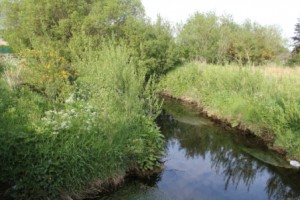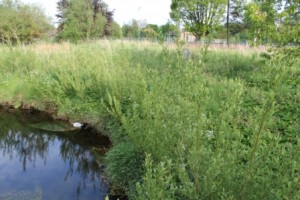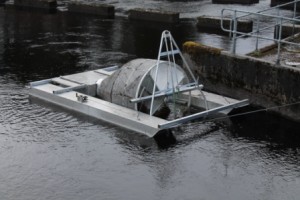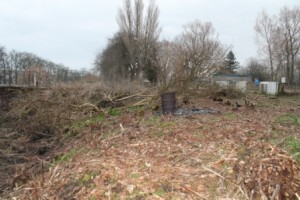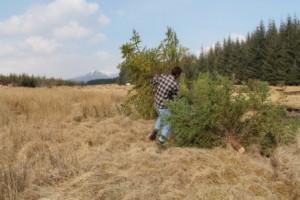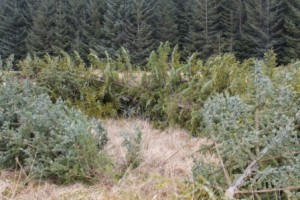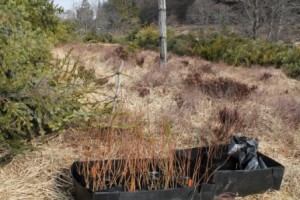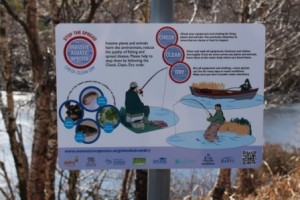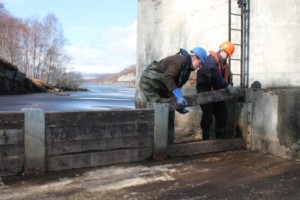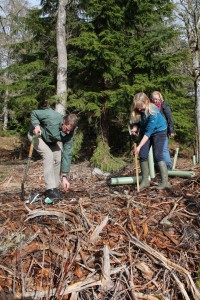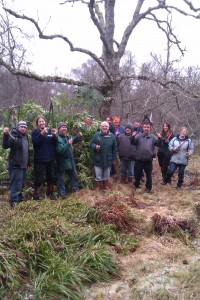 Two winters ago volunteers from the Dingwall Environment Group and The Conservation Volunteers planted local willow cuttings and alders along bare banks of the Peffery. After two growing seasons the trees are now well established. The trees are now providing shelter, shading and feed for the fish in the river. The roots will help stabilise the banksides and reduce erosion.
Two winters ago volunteers from the Dingwall Environment Group and The Conservation Volunteers planted local willow cuttings and alders along bare banks of the Peffery. After two growing seasons the trees are now well established. The trees are now providing shelter, shading and feed for the fish in the river. The roots will help stabilise the banksides and reduce erosion.
Large scale planting with native trees would help to restore habitat and productivity in many rivers in the Cromarty Firth region particularly in over-grazed upper catchments.

